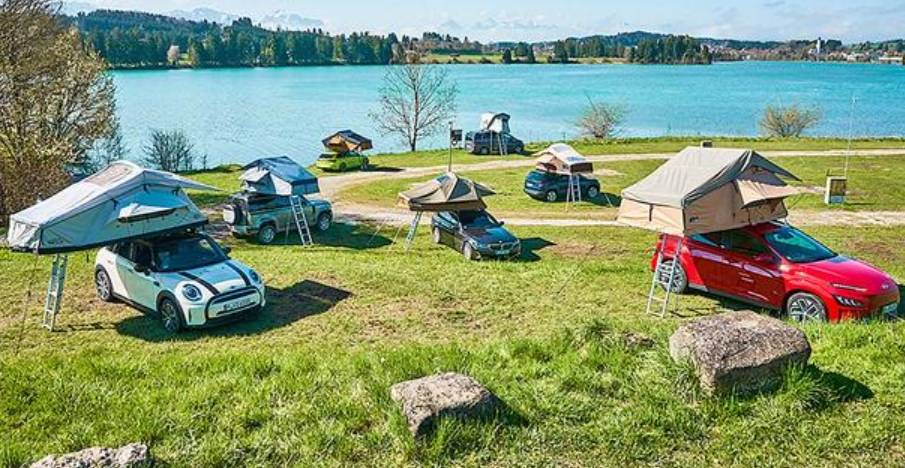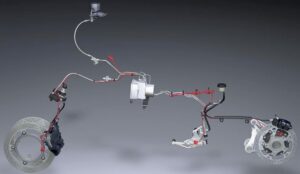Rooftop tents for cars have many advantages, such as the fact that they do not fall under typical camping rules in many countries. And for almost all types of cars there is a car roof tent buy. In the test: Two car roof tents from the Italian company Autohome.
Why roof tent for the car? The advantages and disadvantages
Corona time is camping time. Is the roof tent the optimal solution, because it is cheap, to start your holiday spontaneously? The first question about roof tents is often: Why sleep on the car roof and not just put a tent next to the car? The decisive argument: In Germany and many other countries, camping is only permitted on designated pitches and campsites. A roof tent that does not exceed the external dimensions of the car offers the solution here: If you do without chairs, a table or utensils in front of or next to the car, you can sleep in the roof tent in public parking spaces, because in a broader sense it is important to maintain your ability to drive and not counted as camping. Accordingly, the place to stay should also be left after one night. The roof tent can also be the solution for low clearance heights in car parks: Here you fail more quickly with high pitched campers. Even if campers and mobile homes promise more comfort: roof tents are not only cheaper, but also more flexible in everyday life. The car can continue to be used in daily use without any losses. The roof tent can either remain secured on the roof with locks or can be dismantled and stored in the garage. Not to be neglected: You will hardly find more adventure than when traveling with a roof tent. It goes without saying that the roof tent can also be set up on campsites as normal.
Roof tent for the car: requirements & buying
First of all, let’s clarify the requirements that a vehicle must meet in order to be able to be equipped with a roof tent. A crucial term that makes many people shy away is the permissible roof load. For cars, this is usually 50, 75 or, in exceptional cases, 100 kilograms. But don’t panic: This value refers to the maximum weight that can be transported on the roof while driving, so as not to endanger driving safety due to the higher center of gravity. The frame of the car roof can bear significantly more weight in order to offer the necessary protection in the event of an accident or rollover. Therefore, the mounting points for a roof rack or roof rails can always be found on the frame of the roof. Here comes the next crucial point: the roof rack must also be able to cope with the weight. In addition, only very few manufacturers of roof racks accept liability for damage caused by roof tents. Autohome, the manufacturer of the tested tents, states the maximum weight that the roof can bear is 200 kilograms. Rooftop tents that can be opened from the side of the car lose the decisive advantage that you can spend the night with them in public parking lots. That’s why we’re testing two hard-shell models that don’t exceed the outer dimensions of the vehicles when they’re unfolded.
Roof tents in ADAC-test 2022
The ADAC has tested roof tents for the first time for the 2022 summer season. For the test premiere, the auto club examined seven models from different manufacturers, which open to the side to be supported by a ladder. The positive result: none of the roof tents failed the test. The test winner with an overall grade of 1.5 (school grades) was the Thule Tepui Autana (2260 euros). Its strengths lie in the best workmanship, comfort, usability and impeccable pollutant evaluation. The latter also applies to the second-placed tent Roof Lodge Evo II Extended by Nakatenenga (2650 euros), which was able to convince with an overall rating of 1.9 and only weakened in terms of workmanship. The models Vickywood Big Willow 140 (2668 euros), Campwerk Adventure 140 (2887 euros), dare to be different Deluxe 140 (2825 euros) and Horntools Desert 140 (1862 euros) also received the overall grade “good”. The individual strengths and weaknesses are listed in the infographic in our picture gallery. The Gentletent GT Roof (2021), which has the most innovative structure for the highest price of 3882 euros (all prices as of June 2022), came in last with an overall rating of 2.5: It is not set up with tent poles, but pumped up. Although this saves weight, it was not able to convince the ADAC testers in terms of workmanship and comfort.
Testing the autohome airtop for the mini countryman
Two tents from Autohome competed in the AUTO ZEITUNG test of roof tents (2021) for cars. The Italian company offers solutions for all passenger car models except convertibles. It becomes particularly elegant when the Italians get car manufacturers on board and develop model-specific roof tent solutions. This is what happened with the Mini Countryman and Land Rover Defender. Mini relies on the Airtop model (2022 version from 3099 euros, as of June 2022) with four gas springs that make opening and closing easy. The hard shell rises 94 centimeters and forms a horizontal roof under which the spacious interior opens up. The almost completely usable external dimensions are 1.30 by 2.10 meters (small). The two side entrances can be reached via a ladder, which can be stored under the hard shell to save space while driving. However, this means that at least once the Countryman’s rear seats have to be soiled in order to get to the ladder. In the interior, the Airtop spoils you with a battery-operated light and various storage nets. The lying comfort also surpasses that in conventional tents, where you have to rely on insulating mats or air mattresses. The Autohome Airtop has a real mattress with air circulation under the tent. Armed with pillows and duvets, you can create a pure bedroom while most of your luggage can still be stored in the car.
Testing the Autohome Columbus roof tent for the land rover defender
The roof tent Autohome Columbus (2022 version from 2839 euros, as of June 2022) can be placed on the Land Rover Defender. In addition to a floor space of 1.30 by 2.30 meters (Small X-Long), it also has a clear interior height of 1.50 meters. Two gas springs are sufficient here, which push the hard shell upwards on one side. This not only makes it easier to set up, but also to dismantle, which, despite the enormous vehicle height, is quick thanks to just one buckle at the rear. Another advantage of the construction is an additional entrance at the rear of the Defender. When stowing the ladder, on the other hand, it looks similar to the Mini: The best place is on the roof, so climbing onto the back seats or the trunk is unavoidable. Once unfolded, the Columbus tent offers good comfort with a very comfortable mattress, pillows, numerous shelves and battery-powered lights. The best argument for the Defender is its sheer height, which is a whole floor above the smaller Countryman. Thanks to the greater interior height, a picnic break with a panoramic view is also fun in the roof tent of the Defender. Reassuring: neither the Mini nor the Land Rover can be opened without authorization while the key is in the roof tent, despite the radio remote control and Easy Entry function. It only becomes a problem during thunderstorms, but the protective Faraday cage is only a ladder descent away.






Comments are closed.